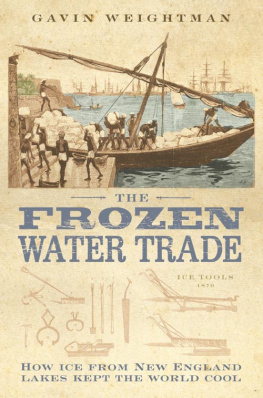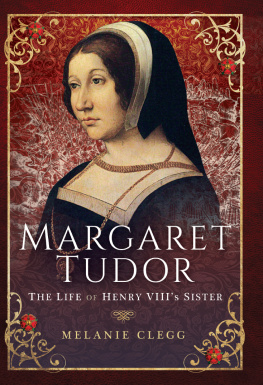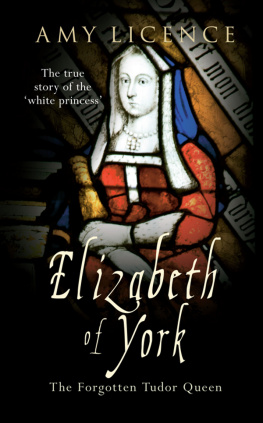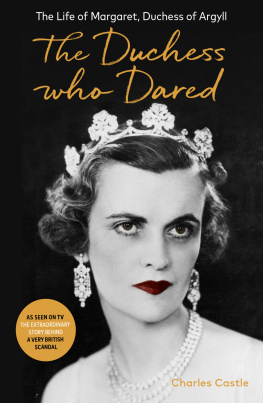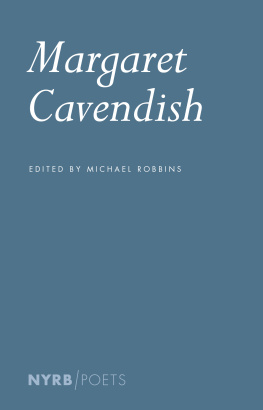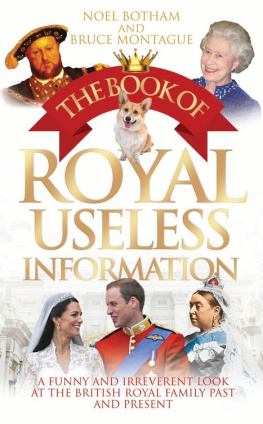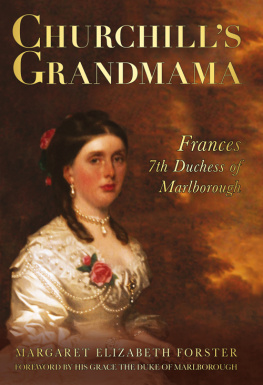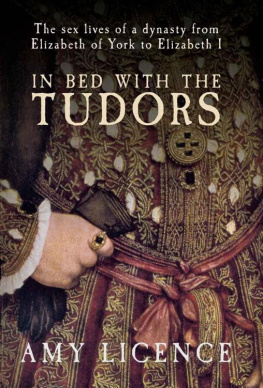CHRISTINE WEIGHTMAN
AMBERLEY
This edition first published 2009
This electronic edition published 2012
www.amberley-books.com
Christine Weightman 1989, 2009, 2012
All rights reserved. No part of this book may be reprinted or reproduced or utilised in any form or by any electronic, mechanical or other means, now known or hereafter invented, including photocopying and recording, or in any information storage or retrieval system, without the permission in writing from the Publishers.
British Library Cataloguing in Publication Data.
A catalogue record for this book is available from the British Library.
ISBN 978-1-84868-099-9 (PRINT)
ISBN 978-1-4456-0968-3 (e-BOOK)
CONTENTS
Prologue
London, Saturday 18 June 1468:
Cheapside was en fte, banners, tapestries and garlands of flowers hung from the high windows and the city guard had taken up their positions along the well swept streets. The Mayor and Aldermen, uncomfortably hot in their fur-trimmed robes of office, stood at the Cross, awaiting the arrival of the Kings sister coming to say her farewells to all the city merchants who had stood surety for her dowry.
As the cheers greeted Margarets cavalcade there was delight and a sense of relief. It was not merely the Londoners pleasure at the sight of an elegantly dressed bride, but much more significantly the fact that she came riding pillion behind her cousin, the Earl of Warwick. The rumours that the powerful and popular Earl had fallen out with the King over her marriage had alarmed the city. Nobody wanted a return to the anarchy and civil war which had crippled the country for more than a decade until the young Edward had come fresh from the battlefield to be crowned at the bidding of Warwick.
Reared in a dangerous and unpredictable world where her father, brother and uncle had all perished in a single skirmish at Wakefield, Margaret too was relieved to have the approval of her mighty cousin. Listening to the speeches and receiving the gift of rich plate which the Mayor offered on behalf of the city, she was well aware of her new importance as the bride of Charles, Duke of Burgundy, the richest duke in Europe. She rode off through the cheering throng towards London Bridge, her serious demeanour reflecting her responsibilities, both towards her own family whom she was leaving behind, and to the new country which awaited her.
A mature and intelligent young woman, a strong sense of duty was to be the hallmark of her whole life and, in spite of the most appalling catastrophes, Margaret, unlike her brothers, would always show a consistent and courageous loyalty both to the House of York and to the House of Burgundy.
CHAPTER 1
The Marriage of the Century
AT KING ARTHURS COURT.
Measured by the sheer bulk of surviving contemporary accounts, the marriage of Margaret of York to Charles, Duke of Burgundy, was without doubt the most important wedding of the century. Princes, nobles, clerics and merchants all crowded into Bruges (modern Brugge) to attend in person. On their return they reported at length to their colleagues. Those unable to be present commissioned and collected detailed descriptions from those who had been there, of what had been worn in the wedding processions, eaten at the banquets and achieved in the jousts.
Princes and nobles wanted blow-by-blow accounts of the nine-day tournament of the Golden Tree. Merchants and bankers were more practical; they wanted full details concerning all the fashions and fabrics worn by the magnificent retinues, and the furnishings and food supplied for the banquets. One such report was dispatched to the headquarters of the Hanseatic League at Lbeck, and another sent to Strasbourg included precise figures for the daily consumption of food and drink. Proud and patriotic, Burgundian chroniclers and writers embellished page after page with such elaborate and elevated prose that even Edward Hall, the Tudor chronicler, normally only too willing to embroider a good story, commented that he thought they saye not true in a grete dele. Ambitious young men like Simon Mulart turned the whole occasion into a Latin epic and hoped thus to secure lifelong patronage from the great Duke Charles.
Among the English sources, the thirteen pages in the Excerpta Historica provide the fullest account, but the Paston letter of 8 July is the most succinct. For once John Paston was lost for words concluding his letter and by my troth I have no wit nor remembrance to write to you, half the worship that is here. No doubt the Paston family was furnished with much greater detail when he returned home.
Olivier de La Marche, the Burgundian Chamberlain, who was in charge of all the arrangements for the procession, banquets and tournaments, wrote what is probably the most detailed account of the whole proceedings. However, it was to be almost forty years after the event before he found time in his busy life to sit down and compose his memoirs. Moreover, like many writers of the period he was totally indifferent to chronology, even dating the wedding to after the siege of Neuss in 1475. He was also vague and confused concerning the events which took place in the weeks immediately before the wedding. Presumably he had been so preoccupied with all the last minute preparations that he had to rely on others to tell him what was happening at Sluis and Damme. Perhaps too he thought that all this had already been well reported, and his own special interests lay elsewhere. Thus he devoted only one paragraph to the actual wedding ceremony, seven pages to the procession, five pages to the banquets and no less than seventy-two pages to the tournament.
The survival of so many accounts of the wedding is also a consequence of the fact that, within a decade, the marriage of Margaret to Charles would be regarded as the last great scene of Burgundian glory. Indeed the marriage had a sound literary appeal. After the debacle of Nancy and the loss of the duchy to the French, there was a widespread and morbid interest in the ill-fated life of Duke Charles. Legends gathered around the memory of this fierce, energetic man, and the description of his magnificent marriage to a princess from the equally ill-fated House of York provided fascinating material for chroniclers and moralists alike.
In every respect the marriage lived up to what was expected from a great dramatic event. The negotiations had been dogged with interruptions and arguments; there had been cliff-hanging delays over the provision of the papal dispensation and the brides dowry. Margarets journey across the Channel was suitably hazardous. Her reception was well prepared and beautifully staged, and the ten-day celebrations were both magnificent and exciting. Neither the English King nor the Burgundian Duke omitted anything that could promote and emphasise their own honour and the importance of their new alliance.
King Edward IV, Margarets brother, was a great contrast to his predecessor, King Henry VI, and he never missed an occasion to enhance his own glory. As a usurper he was anxious that the new Yorkist court should be recognised throughout Europe as truly regal. He would have been well satisfied to know that Gabriel Tetzel had already judged his court to be the most splendid Court that could be found in all Christendom, and that Tetzel had come to this conclusion immediately after his visit to the Burgundian court, reputed to be the wealthiest and most magnificent in Europe. For her marriage Edward provided his sister with a luxurious trousseau and a noble entourage, which would uphold his own reputation and satisfy her honour.


